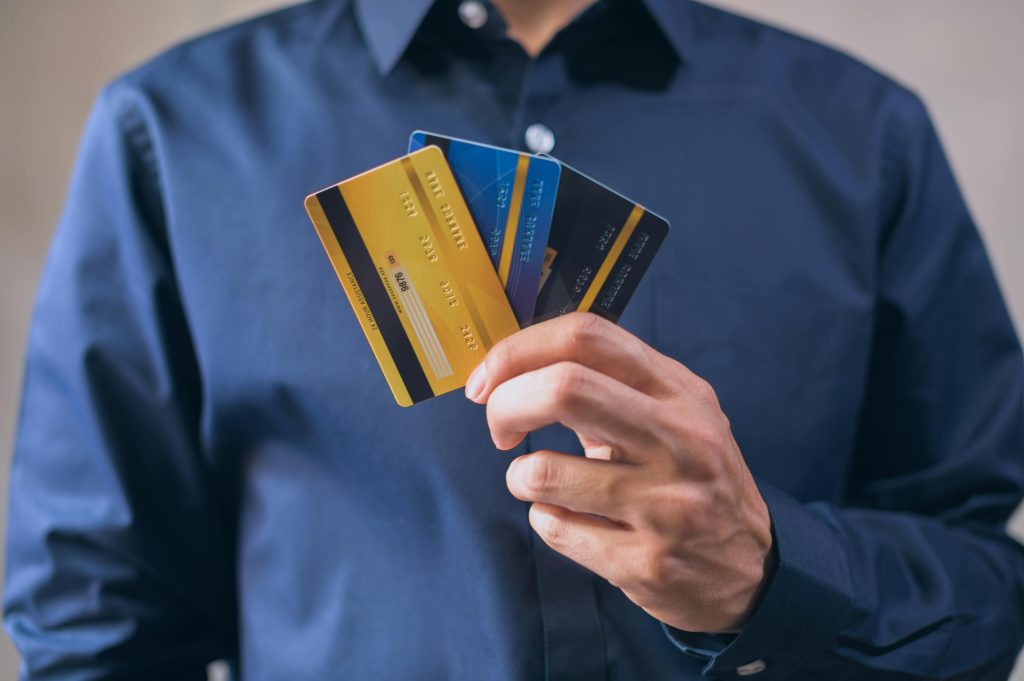You’re in a tough spot. A financial emergency has appeared out of nowhere, and the cash in your bank account isn’t enough to cover it. As you weigh your options, your eyes land on the credit card in your wallet. It’s a tool for buying things, but what you really need is cash. This is the moment when many people tumble down the rabbit hole of the internet, searching for a way to perform a kind of financial magic trick: turning their available credit limit into cold, hard cash.
This process is known as 신용카드 현금화 (sin-yong-ka-deu hyeon-geum-hwa), or credit card cashing. It promises a fast solution to an urgent problem. But behind the promise of instant cash lies a complex world of staggering fees, outright scams, and serious legal dangers.
Consider this your complete walkthrough. We are going to explore every corner of this world together, step-by-step. By the end of this guide, you will understand exactly how it works, how much it truly costs, why certain methods can land you in legal trouble, and what safer, smarter alternatives are available.
Part 1: The Two Worlds of Credit Card Cashing: Online vs. Offline
Before you take a single step, you must understand that there are two vastly different paths you can take. One operates in a digital gray area, while the other is a trip down a dark alley of outright illegality.
The Online Method: The Digital Dash
This is the modern, most common approach. It’s done from your phone or computer and promises speed and convenience. The entire process is built on a simple workaround: you can’t get cash directly, but you can buy things. So, the service has you buy a digital item that they can instantly convert back into money.
Here’s a walkthrough of the typical online process:
- Find a Provider: You search online and find a website that offers credit card cashing services.
- Purchase a Digital Good: The provider instructs you to use your credit card to buy a specific digital asset. The most common choice is an online or mobile gift certificate (like for a popular online store or a cultural voucher).
- Sell the Asset: You immediately sell the gift certificate code to the cashing service.
- Receive Your Cash: The service verifies the code and then transfers the money to your bank account. The amount you receive is the face value of the gift certificate minus their service fee, which is often substantial. The whole process can take as little as 10-15 minutes.
The Reality: While convenient, this path is riddled with risk. The industry is unregulated, meaning there is no one to turn to if you get scammed. The fees are high, and it can be difficult to tell a legitimate (albeit expensive) service from a fraudster out to steal your information.
The Offline Method: The Back-Alley Deal
This method is old-school, direct, and dangerously illegal. It involves you colluding with a physical merchant to fake a transaction.

Here’s a walkthrough of this fraudulent process:
- Visit a “Card Cashing” Store: You go to a small shop or business that offers this illicit service. These are often fronts with very little actual merchandise.
- Process a “Phantom” Transaction: You hand over your credit card, and the merchant charges you for a purchase that never happens. For example, they might charge your card $1,000 for “electronics,” but you receive no goods.
- Get Paid in Cash: The merchant gives you a portion of the transaction amount—say, $800—in cash.
- Pay the Price: You walk away with cash, but you are now on the hook for the full $1,000 credit card bill, and the merchant pockets the $200 difference as their untaxed profit.
The Reality: This is not a gray area. This is criminal fraud. Both you and the merchant are actively deceiving the credit card company and the bank. If caught, you won’t just face a penalty fee; you could face serious criminal charges.
Part 2: The Legal Red Line: A Deep Dive into Why Offline Cashing is Fraud
You heard us right: it’s a crime. It might feel like a simple transaction, but in the eyes of the law, it’s a multi-layered act of deception. Let’s put on our legal hats for a moment and walk through exactly why.
- It’s a Conspiracy to Defraud: The entire transaction is based on a lie. You and the merchant are colluding to make the credit card company believe a legitimate sale of goods has occurred. You are tricking them into fronting cash under the false pretense of a retail purchase, which bypasses their rules and rates for a proper cash advance. This is the textbook definition of fraud.
- It’s a Breach of Contract: Every merchant who accepts credit cards signs a binding legal contract with their payment processor. This contract explicitly forbids processing payments for non-existent goods or services. Engaging in this practice puts the merchant in severe breach of that contract.
- It Enables Tax Evasion: That hefty fee the merchant pockets? It’s off-the-books cash. They aren’t recording a sale or paying taxes on that income. By participating in this transaction, you are directly enabling a merchant’s tax evasion scheme.
The consequences are not just theoretical. If caught, you face a devastating domino effect: criminal charges, a credit score so damaged it could take a decade to repair, and being blacklisted by major financial institutions. No amount of quick cash is worth this risk. This is the most dangerous form of 신용카드 현금화 (credit card cashing), and it must be avoided completely.
Part 3: The Financial Truth: A Detailed Breakdown of the Fees
If the offline path is a definite “no,” what about the online route? To make an informed decision, you need to understand the price. As of 2025, you can expect to pay a fee of 15% to 25%.
You might see ads promising fees of 5% or less. This is the single biggest red flag for a scam. Let’s walk through the math to understand why a legitimate service simply cannot operate on such low margins.
Imagine a service is cashing out $100 for you. Before they even think about making a profit, they have to cover these non-negotiable costs:
- The Payment Gateway Fee (~3%): When you buy the $100 gift card, the credit card network (Visa, Mastercard) and the bank charge the seller a processing fee. This is an instant $3 loss.
- The Asset Resale Loss (~7%): The service now holds a $100 gift card. To convert it back to cash, they must sell it on a secondary market. Just like a used car, a gift card on a resale market is always worth less than its face value. They might only get $93 for it. That’s another $7 loss.
- The Risk Premium (~3%): This industry is a prime target for criminals using stolen credit cards. When a fraudulent transaction occurs, the service provider loses the money they paid out. They have to price this risk into every transaction, like an insurance policy. This adds another $3 loss.
The service provider has already incurred costs of at least 13% just to break even. This doesn’t even include their own business expenses like advertising, website maintenance, and employee salaries. This is why a fee of 15-25% is realistic, and why a fee under 10% is a mathematical impossibility for a legitimate business. They are making their money another way—likely by stealing your data or your cash.
Part 4: The Safe Path Forward: Protection and Better Alternatives
Navigating the world of online 신용카드 현금화 (credit card cashing) is treacherous. However, if you absolutely must consider it, you need to be incredibly careful. When people search for 안전한 정보이용료 현금화 방법 (safe information usage fee cashing methods), they are asking the right question. Safety comes from vigilance.
How to Spot an Online Scam: A Quick Checklist
- Red Flag: Unbelievably Low Fees. As we’ve established, any fee under 10% is a sign of a probable scam.
- Red Flag: Requests for Sensitive Information. A service should never ask for your credit card PIN, online banking password, or social security number.
- Red Flag: Unprofessional Website. Typos, broken links, and no verifiable business information are signs of a hastily made scam site.
The Real Solution: Legitimate Financial Alternatives
The best way to protect yourself is to avoid these services entirely and use the secure, regulated tools designed for this very purpose.
- Walkthrough: The Credit Card Cash Advance.
- How: Simply go to an ATM, insert your credit card, and withdraw cash using your PIN.
- Pros: It is 100% legal, secure, and offered directly by your bank.
- Cons: The fees are typically 3-5% of the amount, and the interest rate (APR) is very high and starts accruing the moment you take the cash.
- Walkthrough: The Personal Loan.
- How: Contact your bank or a reputable credit union and apply for a small personal loan.
- Pros: The interest rate is almost always significantly lower than a cash advance. You get a structured, predictable repayment plan.
- Cons: It requires an application and approval, which can take a day or two.
Conclusion: Make the Smart Choice for Your Financial Future
The need for emergency cash is a stressful and real problem. The world of 신용카드 현금화 (credit card cashing) presents itself as a quick fix, but as we have walked through in detail, it is a solution fraught with extreme risks. The offline path is a direct line to legal trouble, and the online path is a minefield of scams and predatory fees.
Now you have a complete picture. You understand the methods, the severe legal dangers, and the unavoidable financial costs. Armed with this knowledge, you can see that the smartest and safest choice is always to use the legitimate financial tools at your disposal. A cash advance or a small loan might not feel as “clever,” but they provide security, transparency, and peace of mind qualities that are priceless when your financial well-being is on the line.

Leave a Reply